Sign up for The Wild
We’ll help you find the best places to hike, bike and run, as well as the perfect silent spots for meditation and yoga.
You may occasionally receive promotional content from the Los Angeles Times.
Looking for an escape from shutdown but not ready to book a flight out of LAX? Why not discover Los Angeles as if it were a city in a foreign land?
Consider a self-driving architectural tour along Wilshire Boulevard from MacArthur Park to Fairfax Avenue, a distance of about 4½ miles. Hidden in the urban sprawl are historic buildings that range in style from Neo-Gothic to Art Deco to Midcentury Modern.
These landmarks provide a revealing glimpse of the city’s colorful past. Thanks to the L.A. Conservancy and concerned community members, they’ve been saved from the wrecking ball.
In 1895 entrepreneur Henry Gaylord Wilshire built a residential development just west of Westlake (now MacArthur) Park and named the road through it after himself. In 1934 a causeway built over the park connected Wilshire Boulevard to downtown’s Orange Street.
Orange was renamed Wilshire, and over the decades the boulevard was extended west all the way to the ocean.
The Wilshire Boulevard tour begins at Wilshire and South Park View Street, the western border of MacArthur Park. Driving west, landmarks with even-numbered addresses are on the south side of the boulevard; odd-numbered addresses are on the north side.
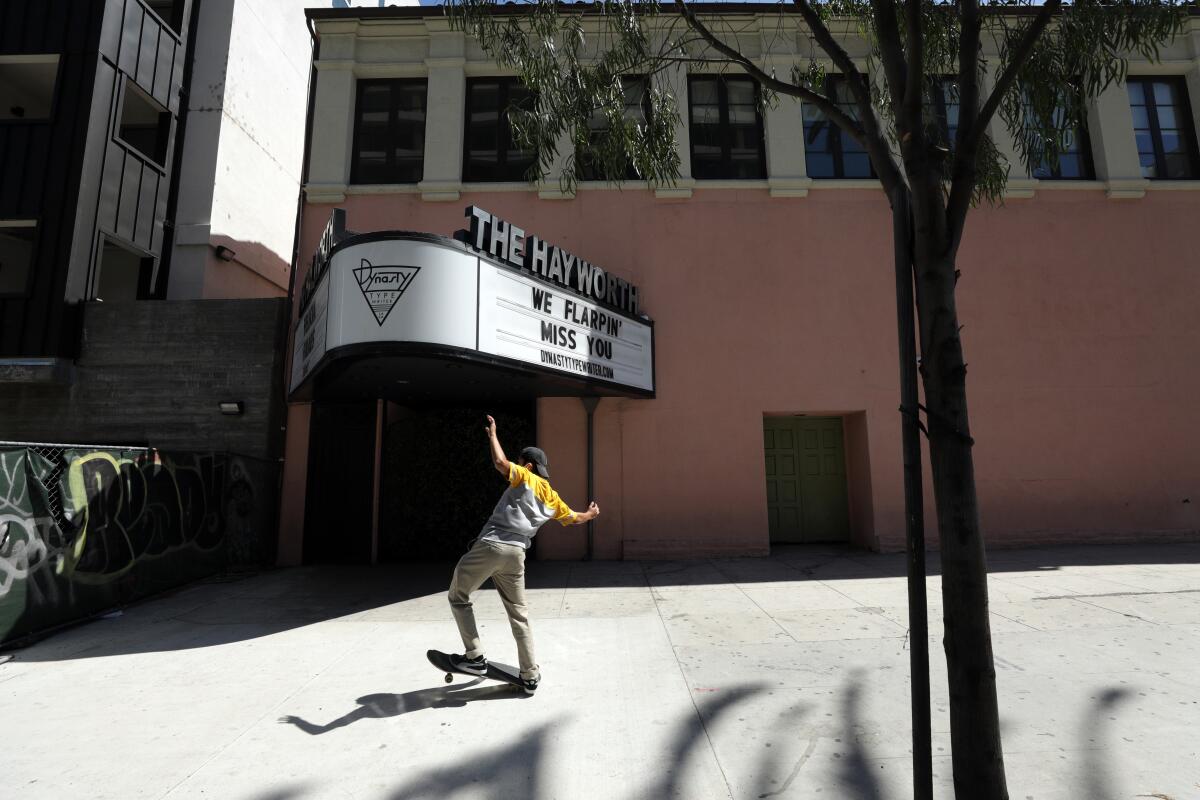
This circa 1927 building, painted dusky pink, was designed in an ornate Spanish Colonial Revival style by architect Stiles O. Clements, who also designed the Wiltern (see below). The complex includes La Fonda de los Camperos, a mariachi restaurant that delighted audiences between 1969 and 2007 and reopened in 2016. Dynasty Typewriter stages comedy and music performances in the theater.
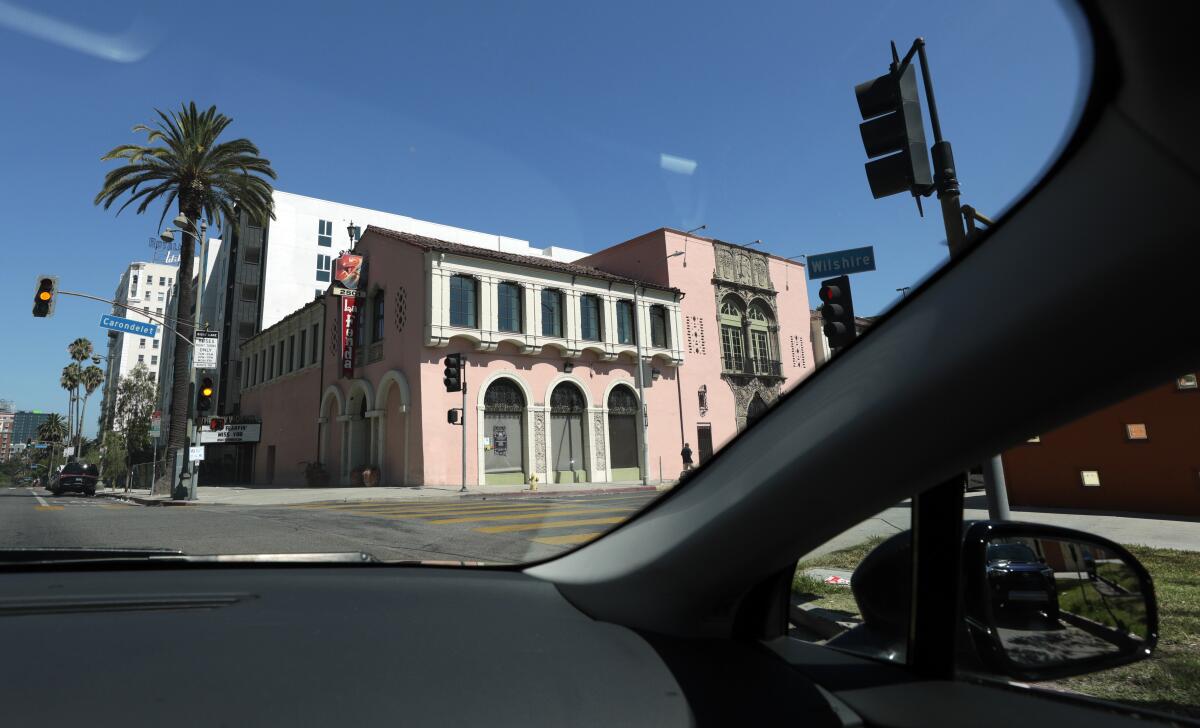
Sculptured lions still guard the gates to the Bryson, the most fashionable apartment building on Wilshire when it opened in 1913. The Beaux Arts structure featured 96 apartments with mahogany woodwork and a rooftop ballroom. Raymond Chandler made the Bryson an L.A. icon when he featured it in his novel “The Lady in the Lake” and his screenplay for “Double Indemnity.” After starring in that 1944 film noir classic, Fred MacMurray bought the Bryson and owned it for 30 years.

This majestic 1929 Art Deco department store, topped with a blue-green copper spire, was one of the first to capitalize on L.A.’s growing car culture. Window displays were designed to catch the eyes of motorists; a parking lot and entrance in back lured them inside. In the store’s heyday, salesgirls included Angela Lansbury, then a struggling young actress. Today it’s the home of Southwestern Law School.
Many of the city’s oldest churches line this stretch of Wilshire Boulevard, including this stately French Gothic-inspired 1928 beauty.

A memorial for Sen. Robert F. Kennedy fronts the site of what was the Ambassador Hotel, where he was assassinated in 1968. The hotel epitomized glamour during Hollywood’s golden age and hosted six Oscars ceremonies. Razed in 2006, it was replaced by a complex of LAUSD public schools. Check out a remnant of one of the hotel’s Art Deco pylons and portions of the entrance gate at the west end of the park.
The massive Romanesque structure with Byzantine elements and a 200-foot tower was the Wilshire Christian Church when it was built in 1926-27. Look for the imitation Hollywood “Walk of Fame” star on the sidewalk. The celeb? Jesus Christ.
L.A. architecture firm A.C. Martin & Associates combined elements of 3rd century and modern church design in this stunning edifice dedicated in 1969. Its soaring concrete towers are interspersed with shafts of three-D stained-glass windows.
The oldest Jewish congregation in Los Angeles completed this Moorish-style building with its Byzantine-revival dome in 1929. Slow down for a glimpse of the pavilion under construction beside it, set to open in 2021. The traffic-stopping design is by prize-winning Dutch architect Rem Koolhaas.
Architect Edward Durell Stone, known for Washington, D.C.’s Kennedy Center for the Performing Arts, designed this 1970 monument to L.A. financier Howard F. Ahmanson. Its classically inspired horseshoe shape, colonnades and central plaza contrast with the boxy high-rises built at the time.
Wilshire and Western was one of the busiest intersections in L.A. when this Art Deco building rose above it in 1931. Swathed in blue-green terracotta and sporting a dazzling theater marquee that wraps around the corner, it could be spotted by motorists from a distance.
The 1965 funeral for jazz star Nat King Cole was held in this 1925 Gothic Revival-style church. Frank Sinatra, Robert F. Kennedy and Duke Ellington were among the 400 fans who attended.
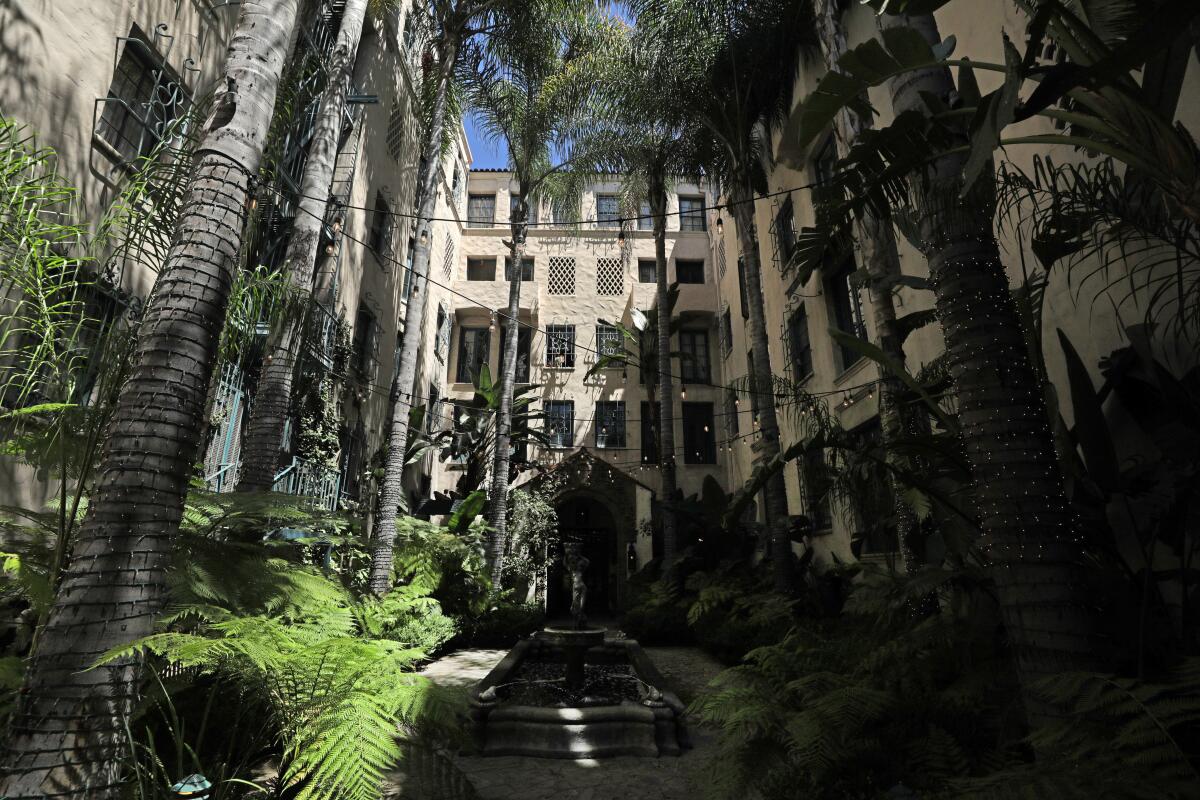
One glimpse of the courtyard’s palm trees, ferns and fountain and you’re back in 1925, when this Spanish Colonial-style gem was completed. Tenants included Mae West, Bette Davis and William Randolph Hearst.
You can’t miss its 144-foot tower, inspired by a 13th century Italian campanile. The Gothic Revival-style church opened as the Wilshire Congregational Church in 1925. In 1945 17-year-old Shirley Temple was married here.
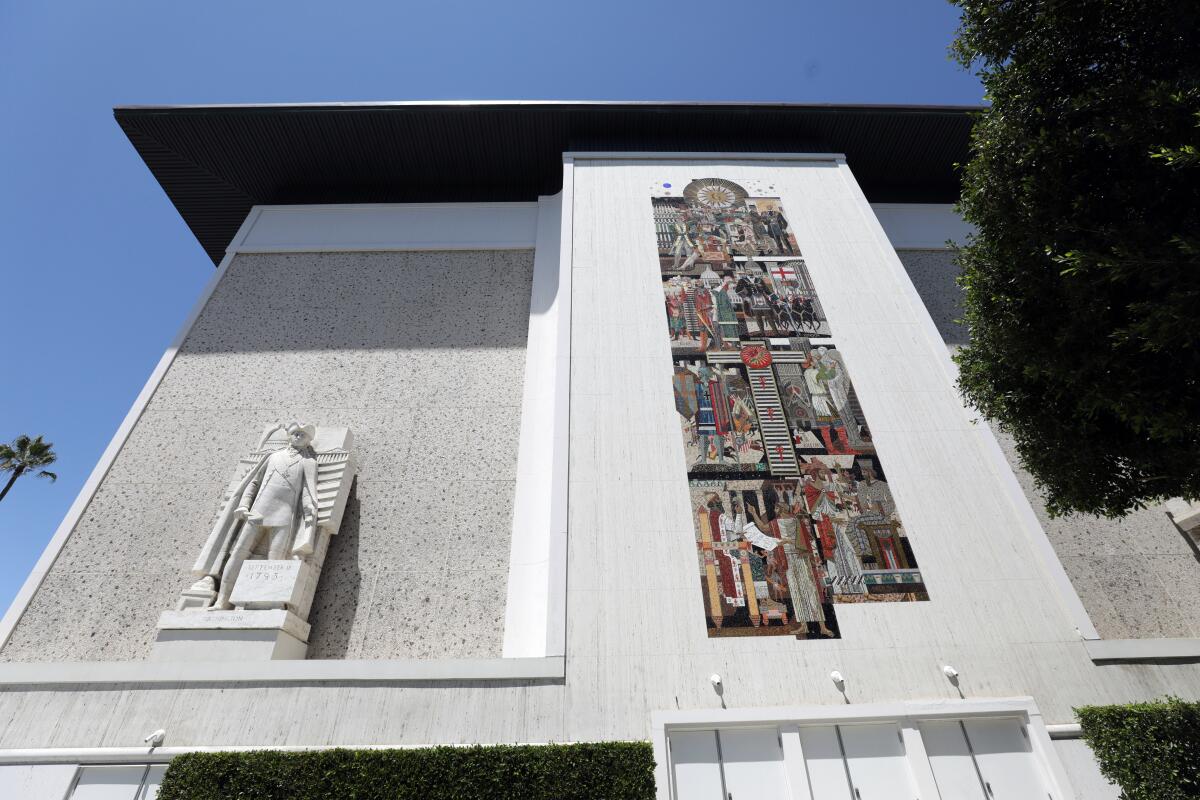
Clad in Italian marble and travertine, this 1961 building has few windows. That’s because artist Millard Sheets designed it for the Masonic order, which preferred an aura of secrecy. Admire the front sculptures of historical figures, then drive around the block to see Sheets’ dazzling mosaic on the east end of the edifice.
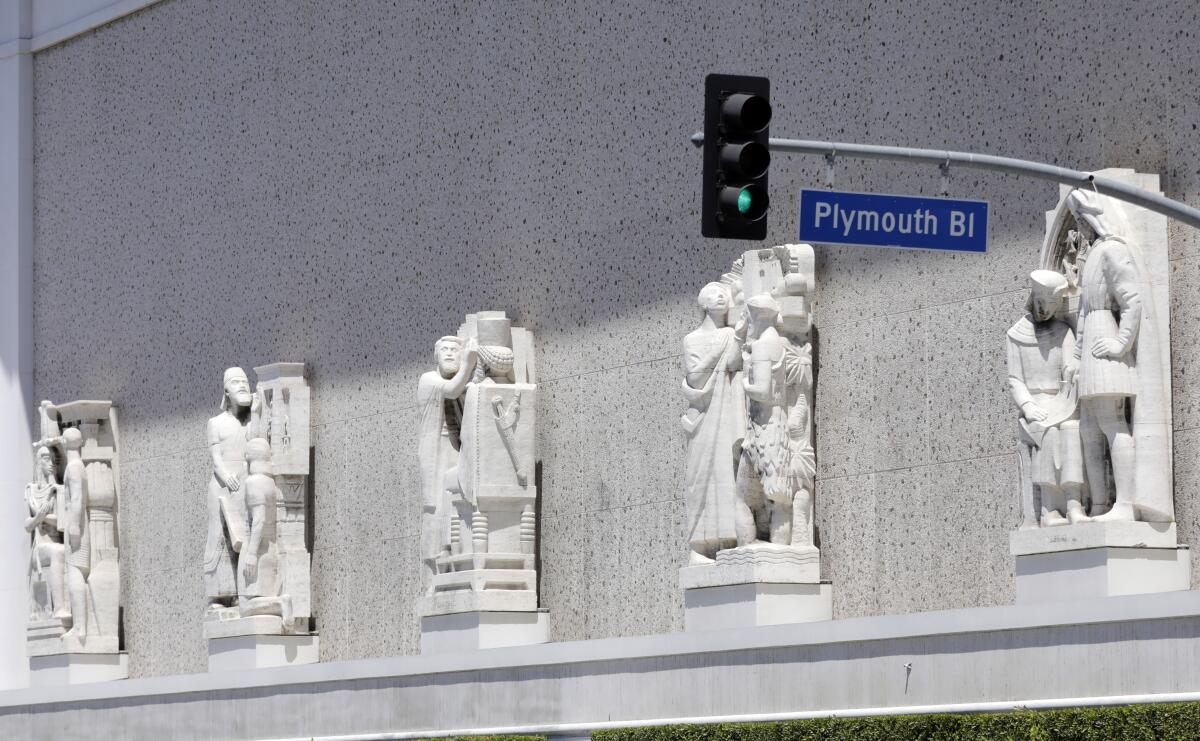
Chris Burden’s “Urban Light” assemblage sculpture of 202 streetlamps is still standing, but much of LACMA, including its original William Pereira-designed structures, is being demolished to make way for a new — and controversial — building that will straddle Wilshire Boulevard.
Ribbons of shiny stainless steel seem to float over the red-painted aluminum exterior of this tribute to the automobile, which opened in 1994 in a former midcentury department store. The effect is one of speed — fitting for a museum housing the Batmobile from “Batman Returns” and the DeLorean time machine from “Back to the Future.”
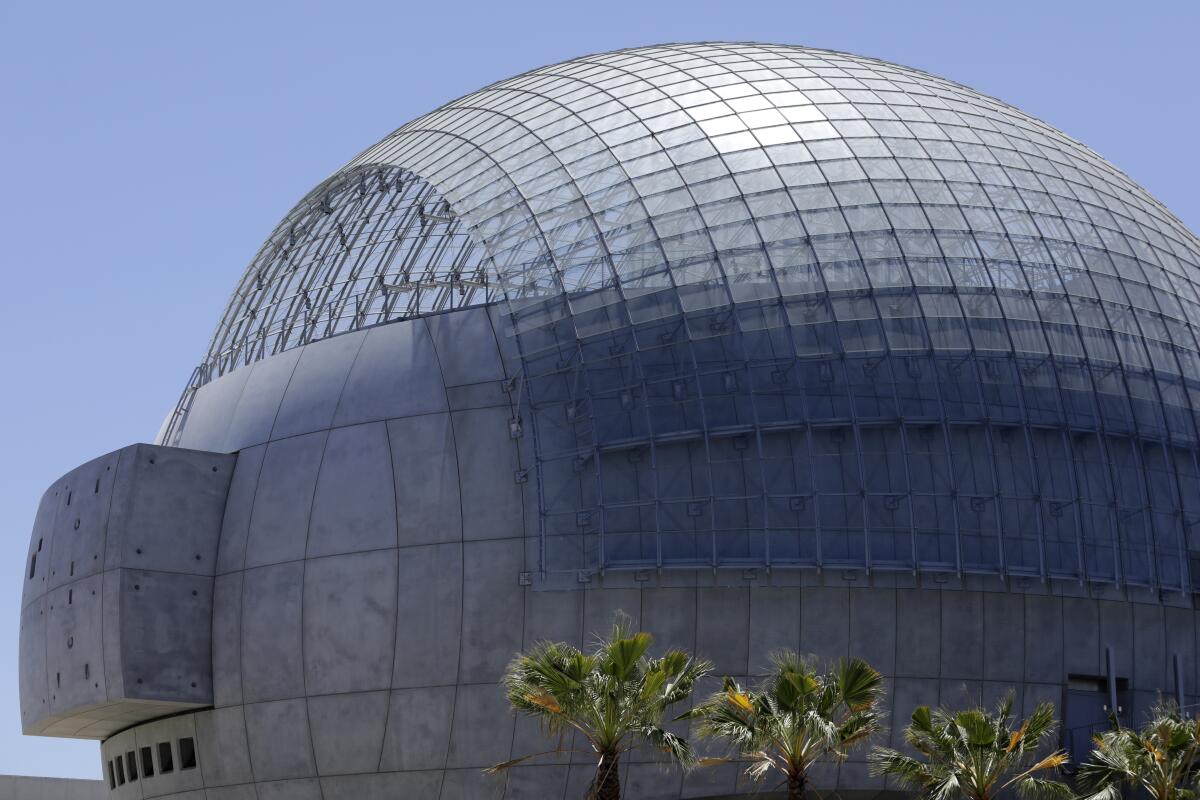
The May Co. department store building, a 1939 example of Streamline Moderne architecture, is undergoing a remodel as part of the Academy Museum of Motion Pictures scheduled to open in April. To see the museum’s crowning glory, turn right on Fairfax Avenue. The giant Renzo Piano-designed concrete-and-glass sphere begs comparison to Darth Vader’s Death Star space station in “Star Wars.” The sphere will house a 1,000-seat movie theater intended — after the shutdown ends — to transport audiences to cinematic worlds far, far away.
For more information go to laconservancy.org
Sign up for The Wild
We’ll help you find the best places to hike, bike and run, as well as the perfect silent spots for meditation and yoga.
You may occasionally receive promotional content from the Los Angeles Times.